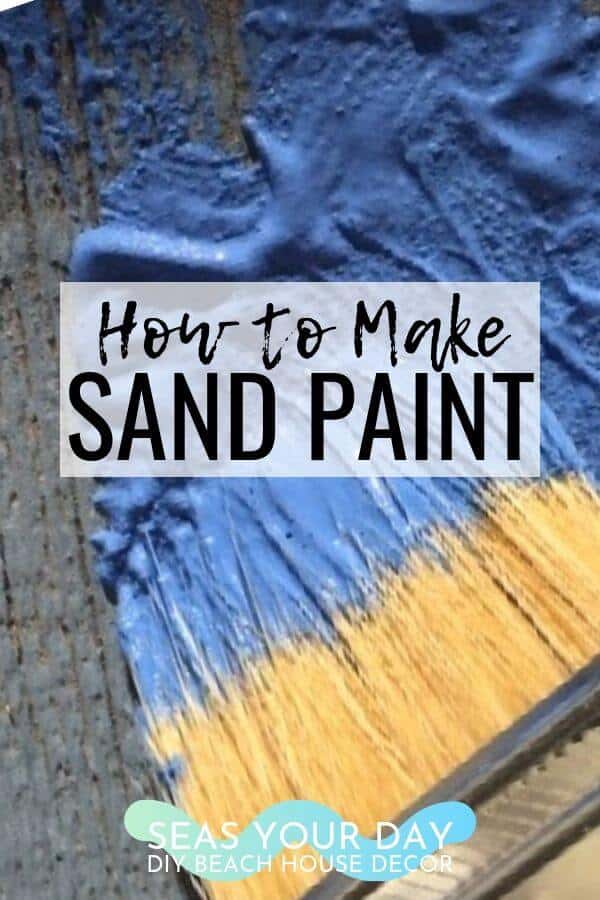Thank you for sharing the coastal love:
For your convenience this post may contain affiliate links. If you make a purchase I may earn a small commission, at no additional cost to you. I'll probably blow it on a cheapo pair of flip-flops or bottle of wine :-)
Sand Paint is simple to make and when dried creates a great textured finish. It’s suitable for small and large decorating projects.
This recipe makes enough to cover a large project like the SAND DOLLAR WALL ART KNOCK-OFF Project.
Note: I used a scoop from a protein powder mix which is the equivalent of about 3 Tablespoons.
THE ULTIMATE DIYer TOOLKIT Check List
Be sure your toolbox always has exactly what you need for any project! These checklists are perfect for Home Decor Crafters & Makers.
As long as you keep the proportions below at 3-2-2-1 you can make as much or as little sand paint as needed to complete your specific project.
Use sand paint as the base for a signage board, furniture makeover, or a variety of art projects.
3 scoops Plaster of Paris
2 scoops water
2 scoops water-based paint (Acrylic)
1 scoop sand** (natural or purchased play sand)
Chip brush
Mixing bowl
Sand Paper 115 and 150-grit
1. Mix the Plaster of Paris and water. Stir with a paint stirrer or Popscicle stick. Mixture will be a bit thin.
2. Add the acrylic or water-based paint in a color of your choice. The mixture will begin to thicken.
3. Add in the sand and stir. The mixture will come together like a thick gritty paste. Note: Play sand yields a smoother paint than real sand.
4. Slather it on! Working rather quickly, dab the paint well onto the surface of your piece. Cover the entire work area. If the sand paint in your mixing bowl starts to dry up, stir in a tiny bit of water.
Note: Again, by keeping the mixing proportions the same you can make smaller or larger batches. Try a small portion so that you’re not hurrying to cover a large surface.
5. Let the paint dry for about one day. I pulled a little switch-a-roo with another board in this photo. Too impatient to wait overnight for the other one to dry. In this example I used a much grittier sand.
6. Sand. Either use a Palm Sander with 115-grit sandpaper to knock down the high spots, or sand by hand. Sand the surface until you get the desired look.
Wipe off or vacuum off the excess sanding dust.
**You can substitute Kosher Salt for Sand to create Salt Paint. The technique is the same and effects are similar, but you’ll notice that Salt Paint gives a more pronounced contrast in the finish product. Try it!
WANT TO REMEMBER THIS IDEA? Please PIN THIS POST to your favorite PINTEREST BOARD!
P.S. We want your browsing experience to be a great one. Find an error, missing or broken product link? Contact me here and I’ll fix it. Thank you!

Thank you for sharing the coastal love: